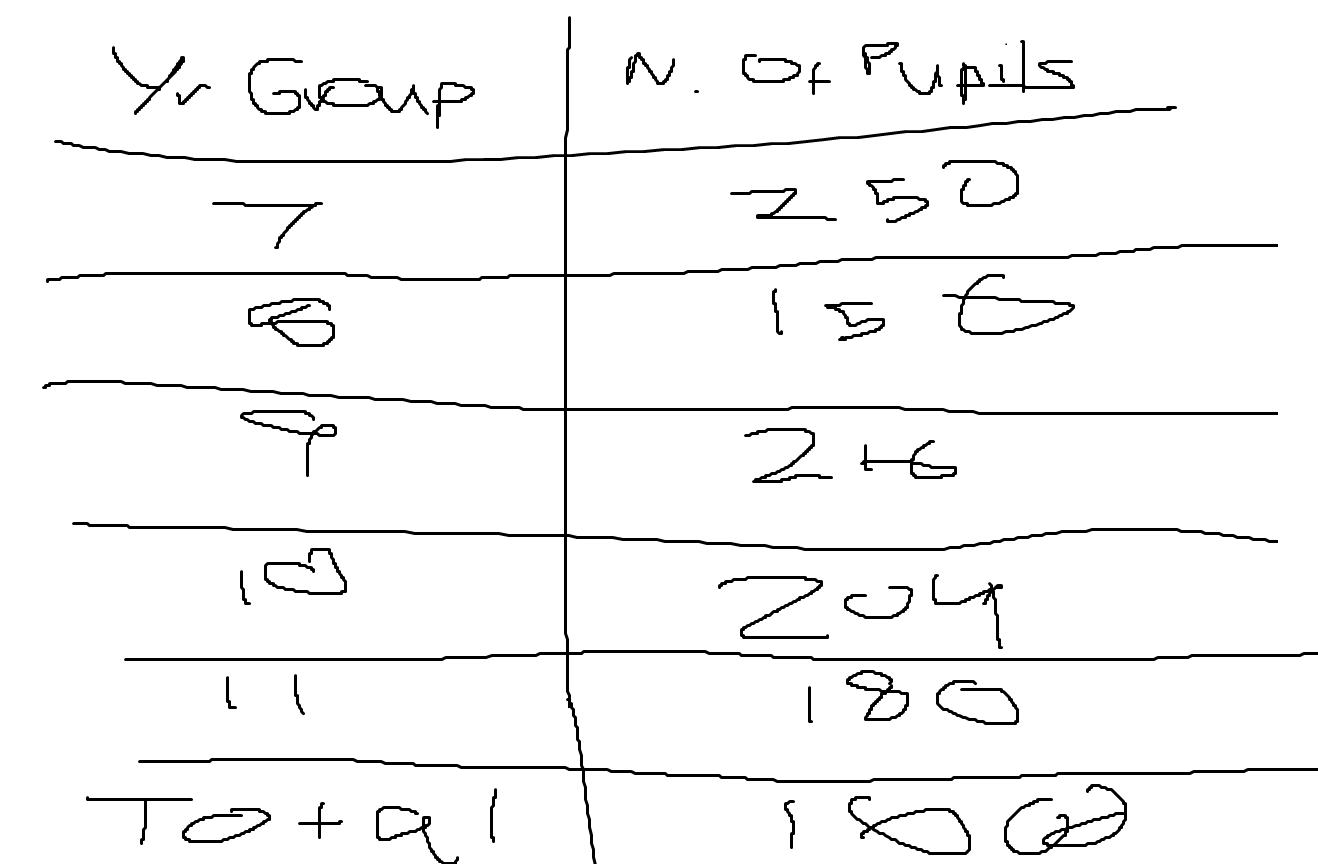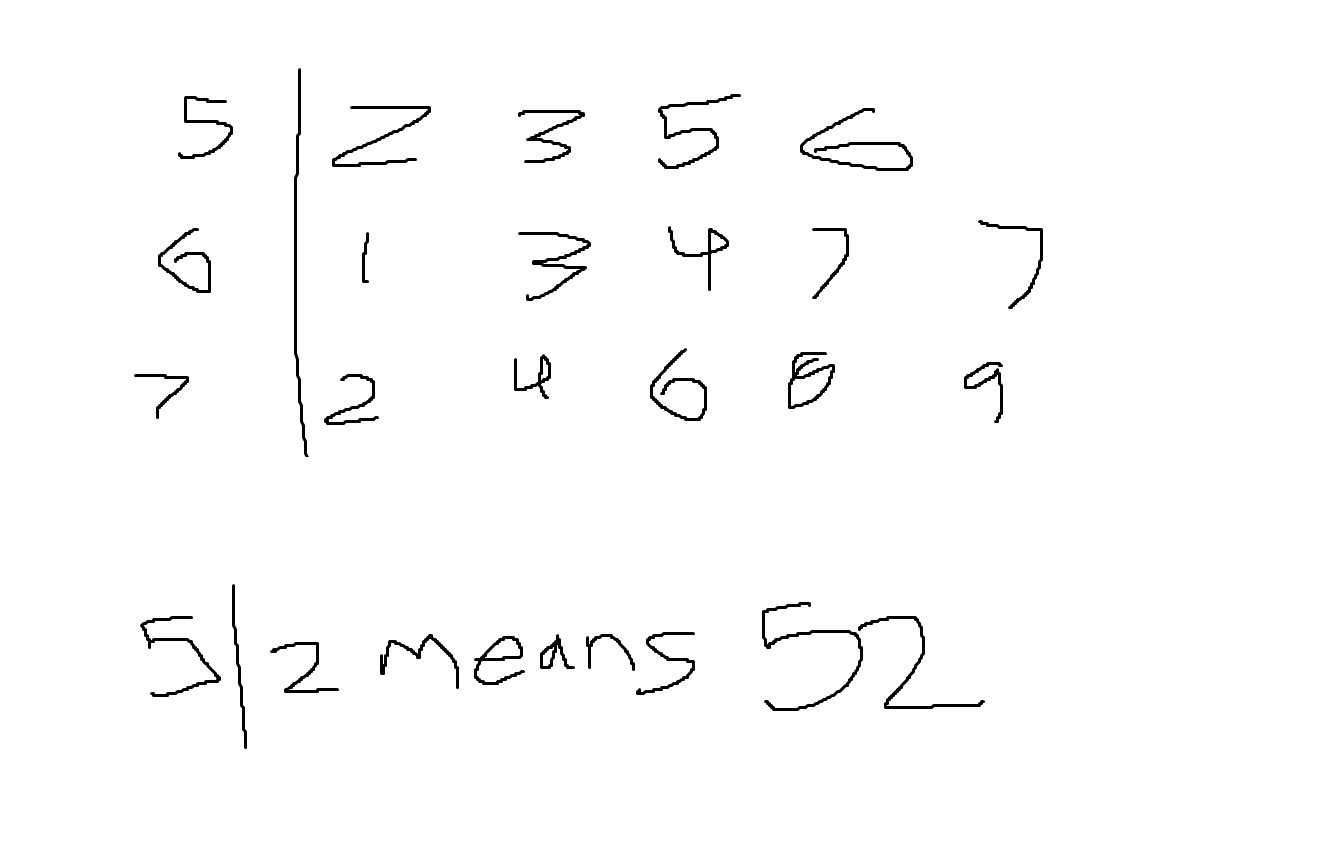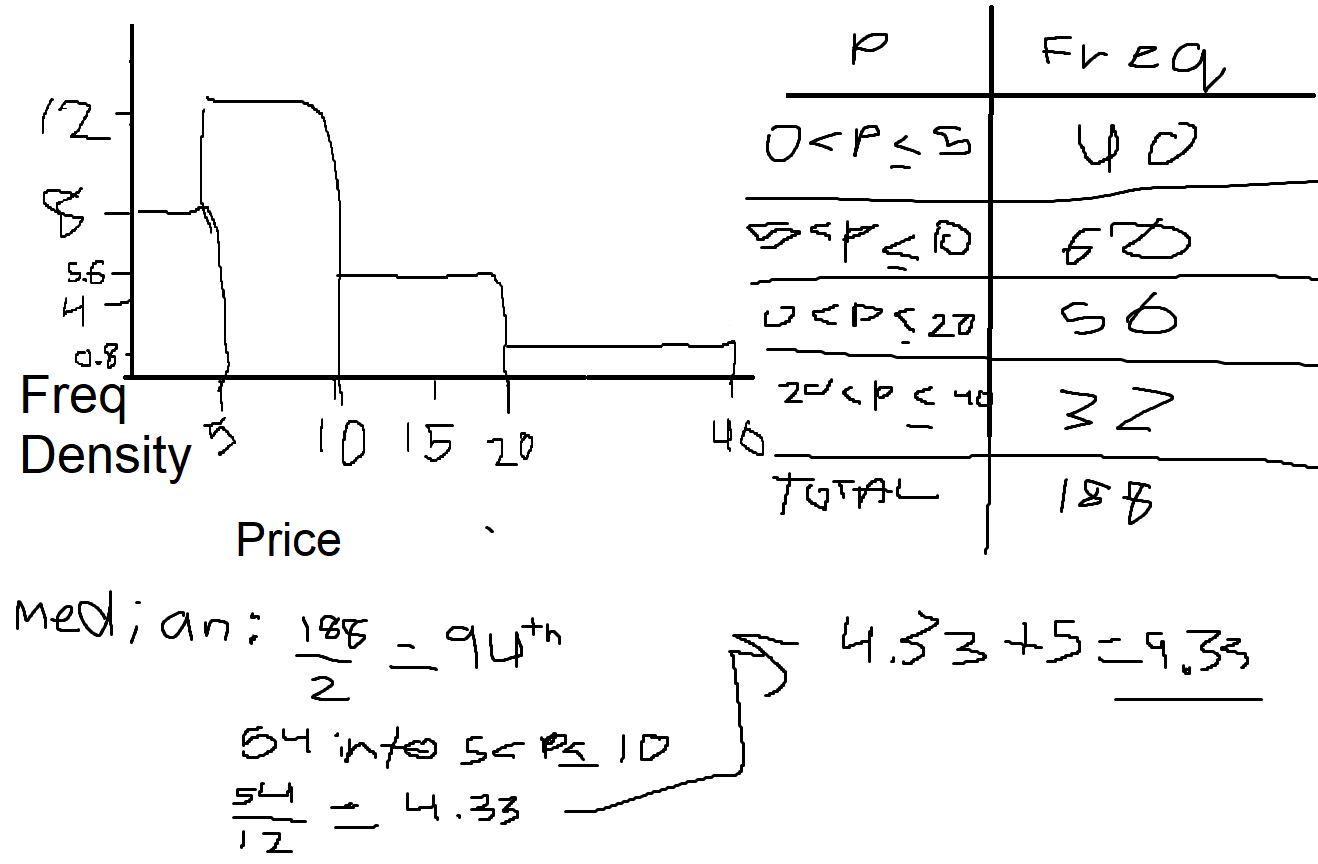Statistics + Probability (copy)
1/11
Earn XP
Description and Tags
All formulae and harder methods for topics in Statistics + Probability (Sections 33-36) - NEED TO DO: MOVING AVERAGES,
Name | Mastery | Learn | Test | Matching | Spaced |
|---|
No study sessions yet.
12 Terms
What is Stratified Sampling?
Dividing POPULATION into CATEGORIES → Taking Sample of SAME PROPORTION OF EACH CATEGORY
e.g Teacher wants to take Sample of 60 pupils in School. Calculate how many should be taken from each Year Group.
Calculate TOTAL NUMBER of Pupils
Number of Students from Yr Group = N in YEAR GROUP / TOTAL NUM X SAMPLE SIZE
e.g 250/1000 × 60 = 15ROUND to Nearest Number
DOUBLE-CHECK that Rounded Answers give CORRECT SAMPLE SIZE

What is Systematic Sampling?
Choose RANDOM STARTING POINT
Find INTERVAL to Pick to people = POPULATION / SAMPLE SIZE
Choose People EVERY INTERVAL
How to Draw a Stem + Leaf Diagram?
Put FIRST DIGIT on LEFT of Line
Put SECOND DIGIT on RIGHT in ORDER
Make KEY

What is the Formula for Frequency Density?
FREQUENCY / CLASS WIDTH
How to Find Median/LQ/UQ from a Histogram?
Calculate what POSITION the Median is (n / 2)
Check what BAR it is in + HOW FAR IN
Do HOW FAR IN BAR/ FREQUENCY DENSITY (Width/Height)
→ Add this onto START OF BAR

How to Plot a Cumulative Frequency Graph?
Find CUMULATIVE FREQUENCIES by ADDING TO TOTAL OF FREQUENCY
PLOT the HIGHEST VALUE of GROUP
CONNECT TO ORIGIN if GROUPS INCLUDE 0
What does Mutually Inclusive mean?
Events CAN’T HAPPEN AT THE SAME TIME
e.g Roll a 2 and a 4 in One Roll
What is the Product Rule for Counting Outcomes?
e.g You are given 4 cards: 1, 2, 3, 4. How many different Ways can they be arranged to form a 4 digit number?
4 × 3 × 2 × 1 → POSSIBITLITIES for each Digit (because a card is used each time)
What is the AND Rule for Independent Events?
P (A ∩ B) = P(A) x P(B)
What is the OR Rule for Mutally Exclusive Events?
P (A ∪ B) = P(A) + P(B)
What is the OR Rule for Not Mutally Exclusive Events?
P (A ∪ B) = P(A) + P(B) - P(A ∩ B)
What is the Bayes’ Theorem?
P (B | A) = P(A ∩ B) / P(A)
e.g There are 100 Students. A total of 50 study Spanish. 25 study both Spanish and French. What is the Probability that a student studies French given that they study Spanish?
P(F | S) = 25/50 = 0.5